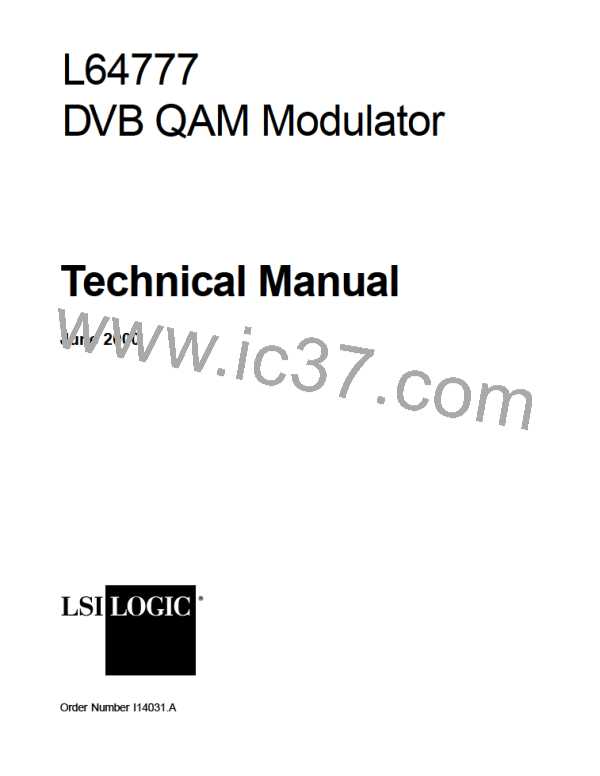A code word is a block of N bytes that includes K message symbols and
N − K check bytes (R). The check bytes, or symbols, are some fraction
of the message symbols. A large number of check symbols allows the
decoder to correct a large number of transmission errors. The redundant
check symbols in a message allow a decoder at the receiving end of a
transmission line to detect transmission errors and reconstruct the
original message content. Figure 2.14 shows a block diagram of the
basic encoder and decoder functions in a transmission system.
Figure 2.14 Forward Error Correction Data Path
Encoder
Message
Message + Check Bytes = Code Word
Data
Channel
Decoder
Corrected
Code Word − Check Bytes = Message
Message
Data
After generating a code word, the encoder transmits it to a decoder. The
decoder compares the bitstream in the message data to the encoding in
the check bytes to detect transmission errors. The L64777 can
reconstruct the original message precisely from the check symbols, as
long as the code word has no more than (R) ⁄ 2 byte errors, where R =
the number of redundant check bytes.
2.7.2 Error Handling and Correction
A bit error occurs when a transmitted 0 is received as a 1, or vice versa.
A byte error occurs when one or more bits in the byte have errors. For
example, a byte with only one bit error is counted as one byte error, and
a byte with m bit errors (all bits are inverted) is also counted as 1 byte
error. As long as a code word has no more than t = (R) ⁄ 2 byte errors,
the RS decoder corrects all errors.
To achieve RS encoding at the lowest possible gate count and power
consumption, the check byte parameters of the RS encoder in the
L64777 are fixed to R = 16, according to the DVB standard. When the
RS encoder is switched off, data feeds through without check-word
insertion at an internal delay of two clock cycles.
2-22
Modulator Architecture

 ETC [ ETC ]
ETC [ ETC ]